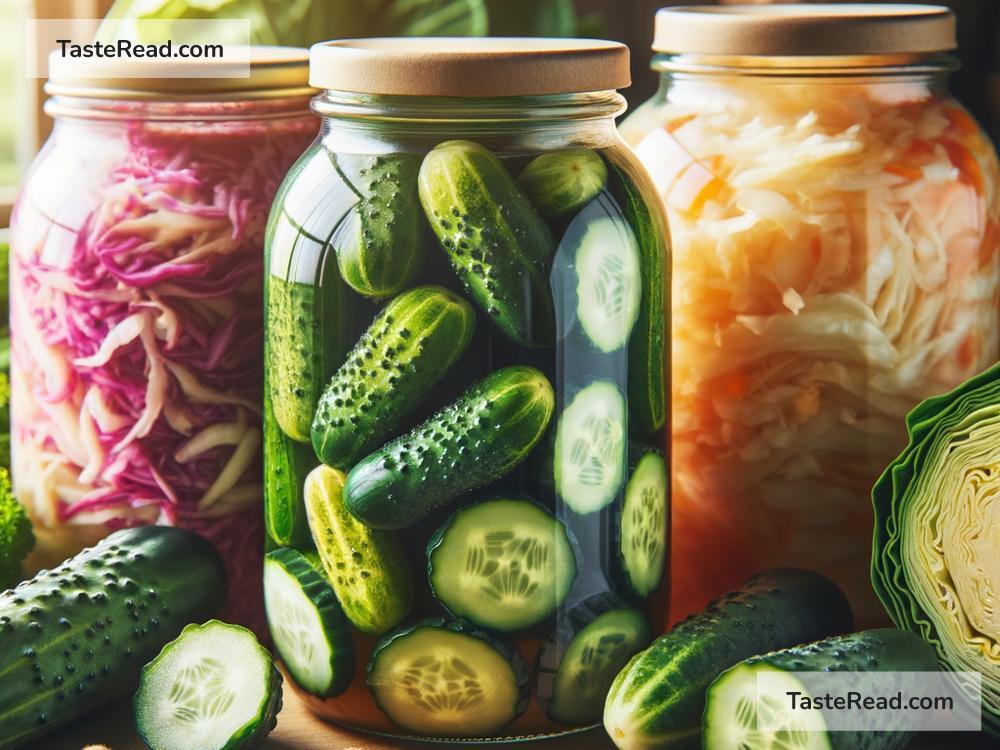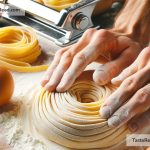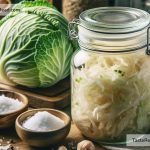Making Homemade Pickles and Sauerkraut: My Fermentation Journey
For anyone who’s yet to embark on the surprisingly addictive adventure of homemade fermentation, let me share with you my journey into the world of making pickles and sauerkraut. It wasn’t just a culinary experiment; it turned into a genuine passion, largely because it’s so simple, yet the outcomes can be incredibly varied and delicious. If you’re curious about starting your own fermentation journey, here’s what you need to know and how you can begin.
Discovering Fermentation
My journey began on a lazy weekend when I found myself binge-watching cooking shows, a hobby that doubles as my guilty pleasure. I stumbled upon an episode dedicated to fermentation. Captivated by the magic of how simple saltwater could transform vegetables into crunchy, tangy delights, I was hooked. It sounded almost too good to be true, so I decided I had to try it myself.
Starting with Pickles
My first experiment was with making pickles. I learned that all you really need is water, salt, cucumbers, and a jar. I was fascinated by the “wild fermentation” process, which meant relying on the natural bacteria on the vegetable’s skin to kickstart the fermentation. I mixed 1 tablespoon of salt with 2 cups of water to create a brine, packed a clean jar with small cucumbers, a few garlic cloves, and dill for flavor, then poured the brine over until the cucumbers were submerged. I loosely covered the jar and let nature do its work.
In just a few days, the liquid started getting cloudy, and bubbles appeared — signs that fermentation was in full swing. The anticipation was half the fun. After about a week, I dared to taste one, and I couldn’t believe it. I had made crunchy, garlicky, sour pickles, all by myself. It was a revelation!
Taking on Sauerkraut
Encouraged by the success of my pickle project, I ventured next into the world of sauerkraut. This was slightly more hands-on at the beginning but involved essentially the same principles. I chopped up a head of cabbage, massaged it with salt until it started releasing liquid, then packed it into a jar, ensuring the cabbage was submerged under its own juice.
This is where patience truly became a virtue. Sauerkraut takes longer to ferment than pickles, so the waiting game began. After a few weeks, I opened the jar to a pleasantly sour smell and, beneath it, my very own homemade sauerkraut. It was crunchy, tangy, and had a depth of flavor I hadn’t experienced from store-bought varieties. I was proud and officially hooked on fermentation.
The Magic of Fermentation
What I’ve come to love most about fermentation is its simplicity and the magic of transformation. You start with something so basic, and through time and a bit of biological magic, you end up with a completely transformed product that’s not only delicious but also healthier. Fermented foods like pickles and sauerkraut are probiotic-rich, which is great for gut health.
Tips for Beginners
- Start Small: Don’t try to ferment a huge batch on your first go. Begin with small quantities to get a feel for the process.
- Keep Everything Clean: While fermentation relies on natural bacteria, you don’t want harmful microbes joining the party. Make sure your jars and tools are thoroughly clean.
- Be Patient: Some ferments can take weeks or even months. Trust the process and give it the time it needs.
- Experiment: Once you’re comfortable with the basics, try adding different spices and vegetables to create your own unique flavors.
Conclusion
Embracing the world of homemade pickles and sauerkraut was more rewarding than I could have imagined. It’s an adventure in patience, experimentation, and ultimately, satisfaction. There’s nothing quite like tasting the fruits of your labor and knowing exactly what went into making them. For anyone curious about dipping their toes into fermentation, I say go for it. You might just find yourself embarking on a fascinating and delicious journey of your own.


